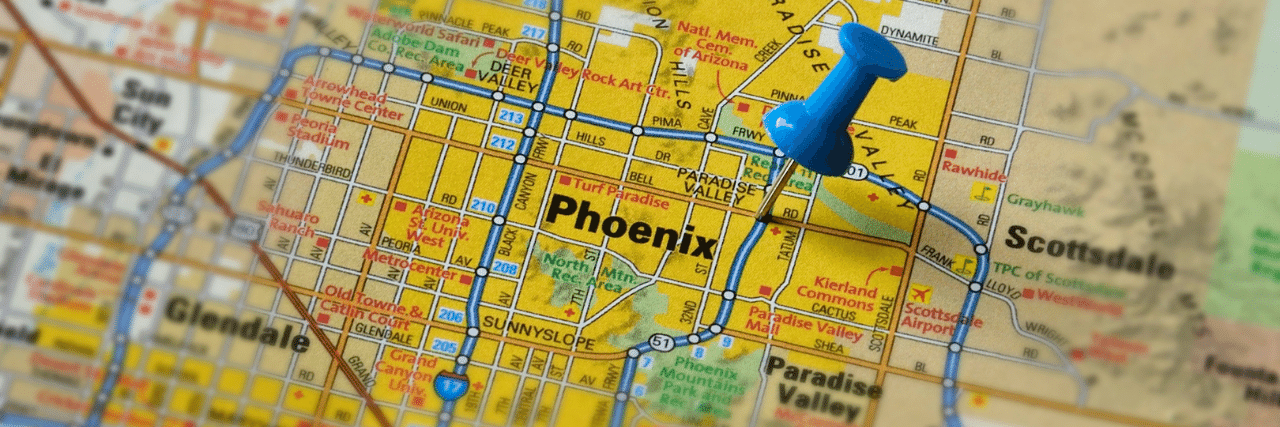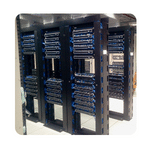How Much is Managed IT in Phoenix 2024? (And Why?)
October 24th, 2023 | 6 min. read

Editor's note: This post was originally published on April 18, 2022 and has been revised for clarity and comprehensiveness.
Managed IT is a long-term, money-saving partnership - and yet many managed IT service providers (MSPs) are squirrely about pricing. It turns out there’s a reason for this.
Managed IT is highly dependent on your IT situation; giving you an immediate price without evaluating your company is disingenuous.
As much as we want to immediately give our Phoenix clients at Intelligent Technical Solutions (ITS) an exact quote, the answer to the question “How much do managed IT services cost?” comes from answering other questions like:
- What’s the total cost of managed IT?
- What are the factors that affect the price of managed IT?
- Will you save money with managed IT?
So, in this article, we’ll go through each question and help you learn the intricacies of managed IT pricing in Phoenix. This information will help you plan your budget and decide if managed IT is feasible for your growing business.
What’s the total cost of managed IT in Phoenix?
If you’re looking for an easy answer, costs start at roughly $3,000 per month + a one-time onboarding fee for a small business to start with managed IT.
However, pricing can vary widely.
Phoenix is an excellent place to find smaller MSPs with lower pricing. If your business has a very small team, needs only basic IT services, and finds a starting MSP, you can push down the costs to as low as $500 per month + onboarding fee.
But you’re taking a huge risk, as managed IT is a long-term partnership with contracts that span years. So be careful when choosing a company – you’ll be with them for a while.
Your location also has less effect on your managed IT prices than you think.
What are the factors that affect the price of managed IT?
So, if your location doesn’t really push down the cost of your IT plan, what does? We interviewed Tom Andrulis, ITS CEO, to explain the factors of a price plan for managed IT.
The five factors, he said, are:
- Service time needed
- Number of users
- Number of servers
- Amount of data
- Services and upgrades needed
1. Service Time Needed

Service time is how much time you and your MSP talk while fixing an IT issue.
“The amount of technical time changes from company to company based on the complexity. Some networks are very basic and require very little time to support, while others are much more complicated,” Andrulis said.
As the finance manager, you need to figure out the amount of service time required for your company. Ask yourself:
- How big is your IT network (number of users, workstations, servers)?
- Do you need proactive maintenance and support?
- Do you need to have after-hours and weekend support?
- Is your business’ IT system running 24/7?
- Do your usual IT problems take a long time to fix?
- Do you have recurring IT issues, or are they usually a one-time problem?
Andrulis added, “The bigger the network, the more time it takes to support. Usually, when companies get over five employees, they require a recurring amount of support from month to month.”
Price range for service time:
Service time is either billed hourly or as a recurring cost.
If you’ve hired a break-fix company instead of an MSP, you’re on an hourly rate. Hourly service time is often $150 to $250/hour but can go up or down depending on the company you’ve hired.
Managed IT service providers include service time in your plan with them. Plans for only service time can range from $50 to $150/per user per month.
Always check the time allotted for service in your plan and evaluate if that is enough for your needs.
2. Number of users

More users mean more devices to manage, which equals a higher price. Do an inventory of how many users you want your MSP to manage.
According to Andrulis, “The more users, the more support is needed. Based on our stats across 6,000 users, it takes about one to one and a half hours of support per user, per month.”
Some MSPs charge per workstation (or per device) instead of per user. If your company has strictly one device per user, MSPs charging per workstation is cheaper.
However, a per-user charge is more practical if you have multiple devices for a single user.
Also, count all mobile devices or tablets in your network, especially if you have a Bring Your Own Device (BYOD) policy. Some MSPs offer a separate Mobile Device Management (MDM) service for any tablets or phones on your network.
Having an exact number of users in your network makes your estimated costs much more accurate.
Price range for users:
You can expect to spend between $50 to $250/user per month. The price changes on the other factors and – in rare cases with companies needing top-of-the-line cybersecurity, regulation compliance, and large data management – goes up to around $400/user per month.
3. Number of servers

The number of servers can dramatically affect the price of support. Just like increasing the number of users equals higher prices, having more servers is more expensive.
“More servers equal more complexity on the network and firewall, more backups, more security measures,” Andrulis said. “It usually takes about two to four hours of support per month per server.”
Aside from the number of servers, ask yourself how your MSP will manage your servers. Do you want them to manage everything? Do you want all the security features? Do you need different backups for your servers? Do you need to consolidate your servers?
Even if you don’t have a server, prepare for a conversation about getting one. MSPs usually recommend servers for growing companies, as they are essential.
Price range for servers:
If you’re a small business and want to buy a server outright, expect to spend $1,000 to $3,000 to set up one server. The cost of a server goes up or down depending on its use and hardware. Server prices also increased dramatically during the COVID-19 pandemic due to supply chain problems and equipment shortages, and servers are still pretty expensive to build today.
Another option MSPs provide is getting a server with the MSP instead of building your own. It’s a lower upfront cost with a monthly fee instead.
For example, at ITS, our cloud servers start at $185 per month, while a Backup and Data Recovery (BDR) server will start at $200 per month. Other MSPs will also have prices ranging between $200 and $500 for servers.
4. Amount of Data
Data is pretty complex. For in-house IT, the cost of data storage is different from the cost of protecting it.
But most MSPs bundle in data protection with data storage – when they have your data, they need to protect it, too.
Many issues like cybercrimes, faulty equipment or software, or human errors come up that can affect your data. An MSP doing its job right fools you into thinking these issues don’t exist.
Like users and servers, more data requires more storage and management, resulting in a higher fee.
Price range for data management:
Data storage has a huge price range. You might spend anywhere from $5 per month (for directly bought cloud storage with no maintenance) to $500 per month (for maintained data storage with backups).
5. Services and Upgrades Needed
![]()
After considering the previous four factors, prepare a checklist of services you want.
Will you be working with your MSP to improve your network’s security? Will you ask them to set up your entire IT infrastructure and manage your devices? Will you need cloud services or VoIP services? Are you on outdated software and need an IT overhaul?
Go through the managed IT plans of each MSP candidate. Each MSP offers different services for each managed IT plan. Here, Andrulis advises companies to think big.
He said, “Companies must consider managed service pricing in unison with bigger priorities: complying with government regulations like HIPAA, CMMC or Gramm-Leach-Bliley, or having multiple local or remote locations or expanded work-from-home staff.”
Find an MSP that has a plan with all the services you need.
But finding an MSP with all your needs isn’t the last step.
After all, there are future upgrades to consider. Technology moves quickly – for example, the tech world is shifting to Windows 11, less than a decade since Microsoft launched Windows 10.
Get an MSP that takes future tech upgrades into account.
“Nothing lasts forever… eventually, your brand-new computer or server will become old and will need to be replaced,” Andrulis said. “Other times, you might decide to move your office or invest in new technology to help streamline your business.”
Price range for services and upgrades:
The price range for services and upgrades will wildly vary. Expect to spend from $50 per month to $1,000 per month, depending on the size of your company and the services you need.
These costs can, of course, go up if your company has a lot of users or has specific, intensive service needs.
Will you save money with managed IT?
In all honesty, managed IT isn’t the cheapest option; you can simply get break-fix services and never move beyond that if you’re only concerned about the price tag.
But managed IT is about getting value for your money; it has short-term financial implications and long-term strategic benefits such as cost predictability and access to a wider net of IT professionals.
Managed IT done right can absolutely save money. For instance, Adventure Photo Tours saves $92,000/year with managed IT, while this roofing company felt the services are priceless.
Ready to discover your managed IT bill?

Overall, if you’re a small Phoenix-based business, expect to spend anywhere from $500 to $3,000 per month or $50 to $250 per user monthly, plus a one-time onboarding fee.
But this is only a starting price range. Experienced MSPs such as ITS will not give you a final price without asking specific questions about:
- Service time needed
- Number of users
- Number of servers
- Amount of data
- Services and upgrades
To get a personalized managed IT price for your company, check out our managed IT pricing calculator, or if you have more questions about pricing, schedule a meeting with our IT experts.
But if you still want to learn more about managed IT, take these free resources with you:
Kharmela Mindanao is a senior content writer for Intelligent Technical Solutions. She’s called Ella by her friends and likes yoga, literature, and mountain climbing. Her favorite book is Anxious People by Fredrik Backman. She creates art and poetry and is on a quest to find the best cheesecake.
Topics:

